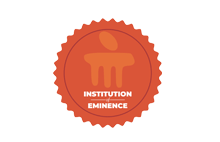The combined effect of split fueling strategy and EGR on the combustion, performance, and emission characteristics of a CRDI biofuel engine
Document Type
Article
Publication Title
Heat Transfer
Abstract
The current research investigates the impact of a split fueling strategy combined with several flow rates of exhaust gas recirculation (EGR) on the combustion and emission characteristics of a diesel engine running on B20 waste cooking oil (WCO) biodiesel. A four-stroke single-cylinder common rail direct injection engine was employed for experiments. It operates with a B20 blend of WCO biodiesel at 600 bar pressure for varying pilot fueling conditions of 10%, 20%, and 30%. The B20 blend with 30% pilot fuel injection (B20P30) showed excellent performance and emission characteristics compared with B20 blend with 10% pilot fuel injection (B20P10) and B20 with 20% pilot fuel injection (B20P20). However, B20P30 had greater levels of nitrogen oxide (NOx) emissions than those by diesel. EGR discharge levels in 5% increments, ranging from 0% to 15% were introduced to address this issue. The experimental findings revealed that both cylinder peak pressure and heat release rate showed a reduction when the EGR flow rate was enhanced. The recirculation of exhaust gas into the combustion chamber led to a slight increase in the emission levels of hydrocarbon (HC), carbon monoxide (CO), and smoke, as well as a decrease in carbon dioxide (CO2). Nevertheless, the introduction of EGR significantly decreased NOx emissions by 22.94%, 35.05%, and 47.96% for EGR flow rates of 5%, 10%, and 15%, respectively, when compared with the engine operating without EGR. Overall, the two-stage fueling strategy, B20P30 blended with 10% EGR corroborated to be beneficial in reducing NOx emissions with minimal performance penalties. Although there was a slight uptick in certain emissions, the overall trade-off between emission reduction and performance was favorable. The culmination of this study is targeting the objectives of sustainable development goal 7 (clean energy) and goal 13 (climate action) to be achieved by 2030.
First Page
1532
Last Page
1555
DOI
10.1002/htj.23004
Publication Date
5-1-2024
Recommended Citation
Fernandes, Lawrence Joseph; Rajashekhar, Chandrashekharapura Ramachandraiah; and Dinesha, Pijakala, "The combined effect of split fueling strategy and EGR on the combustion, performance, and emission characteristics of a CRDI biofuel engine" (2024). Open Access archive. 6627.
https://impressions.manipal.edu/open-access-archive/6627


